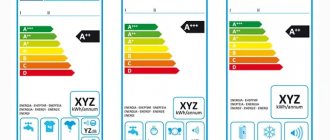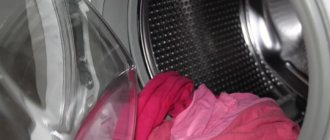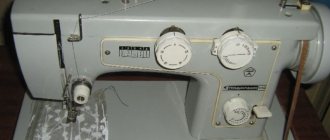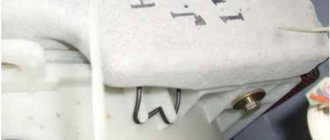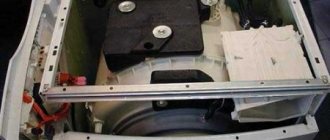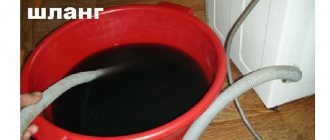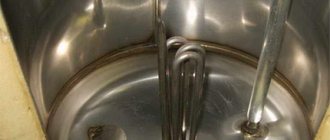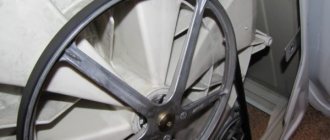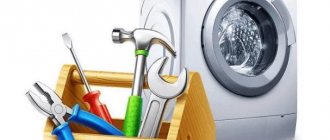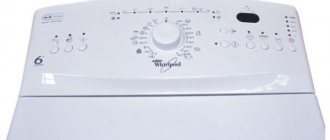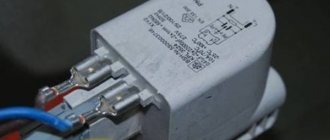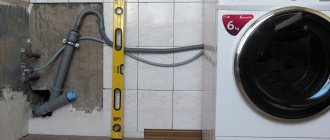Which washing machine tank material is better?
The tank is an important component of the washing machine. The service life of the SMA depends on the quality of its manufacture, because it constantly experiences loads, as well as exposure to high temperatures. Therefore, it is important to choose the right tank material for your washing machine. Our article will help you expand your knowledge about the types of materials for the tank, understand how they differ, and also make the right choice when purchasing.
Be careful! Do not confuse the drum with the tank. The drum contains laundry during washing.
Types of materials
Below are the main types of materials from which tanks for washing machines are made.
Enameled metal
In production, ordinary metal coated with enamel is used. It protects the metal from damage and corrosion.
Advantages:
- The material is durable and reliable, withstands shocks and loads.
- Not afraid of temperature changes.
Flaws:
- During washing, foreign objects may enter, resulting in damage to the enamel. Therefore, the metal subsequently corrodes and begins to let water through.
- An SMA with a metal tank is much heavier than one with a tank made of other materials.
- Outdated manufacturing technology. Therefore, if it breaks, you are unlikely to be able to find a suitable replacement.
Which tank (drum) is better for a washing machine? Some users find that it locks into place better on top-loading machines than on front-loading machines. This opinion is erroneous, since the fastening in both types is approximately the same.
Stainless steel
A long-lasting classic. Washing machines with stainless steel tanks serve faithfully for many years.
Advantages:
- High strength, excellent tolerance to temperature changes and contact with water.
Flaws:
- Heavy weight.
- High noise level (metal does not dampen vibration well).
- Energy consumption, compared to other materials, is greater. This is because metal does not retain heat well.
- High price.
A stainless steel tank is never cheap. If the manufacturing technology (welding and assembly) is followed, it will last for decades. Therefore, the low cost of SMA in this case should alert you.
Plastic (polymer)
Every manufacturer is trying to stand out in the market. Therefore, new types of polymers with different names are being developed. If you are thinking which is better - silicone or plastic, we will say that their main characteristics are similar, but there are slight differences.
- Polyplex in the washing machine. The polymer is not afraid of high temperatures, moisture, or rust. Composite material perfectly absorbs noise, ensuring almost silent operation of the washing machine. Inexpensive polyplex has good thermal conductivity, which allows you to consume less electricity. But the plastic tank (drum) in the washing machine is considered quite fragile.
- Carboran. Although it belongs to polymers, its characteristics correspond to stainless steel. Durability, environmental friendliness, resistance to high temperatures and corrosion. Unlike plastic, carboran polymer is not afraid of mechanical damage.
There are also types of polymers in the washing machine, such as Silitec and Carbotec. Their qualities are similar to previous species. Summarize.
Advantages
plastic tanks made from polymers:
- Ease.
- Excellent sound and noise insulation. Therefore, a washing machine with a polymer (plastic) tank is several times quieter than one with a metal one.
- High thermal insulation allows you to save energy.
- Resistance to temperatures, detergents, bleaches.
- Long service life. If cared for, it will last up to 30 years.
Flaws:
- Fragility. Possibility of cracks and splits. When transporting items and getting them during washing, fragile plastic is often damaged and bursts.
No less important when purchasing is the cost of the machine and the shape of the drum. So, there are washing machines with drop-shaped drums. Watch the video and decide which choice to make:
It’s up to you to decide which washing machine tank material is best to choose. We hope we have helped you understand the characteristics and differences of materials.
Purpose of the SMA tank
The washing machine tank cannot be assessed visually when purchasing. Therefore, you need to immediately find out about the material from which it was made.
Polynox tank
Do not confuse the tank and the drum. The laundry is placed in the drum, and it is this drum that rotates during washing. Tank is the container where the drum is placed. Water and detergents are poured there. This mixture enters the drum through special holes through the pipe.
The tank takes on a lot of load. The water heats up in it, aggressive chemicals get into it, and some object may accidentally fall out of the drum. These factors can significantly accelerate the failure of a part. To prevent this from happening, you should take care in advance of choosing a car with a suitable tank.
Do you turn off the water tap after washing?
Oh yes! No.
The drum is made of stainless steel. Tanks are made from the following materials:
- stainless steel;
- plastic;
Each of them has its own advantages and disadvantages and affects the price and life of the washing machine. If it breaks down, most often you have to replace the entire washing machine, so you should take your choice seriously.
Tank material: polyplex, plastic, stainless steel in a washing machine: which is better?
Users of washing machines pay attention to the manufacturer when purchasing. They choose a model, look at the set of functions, and the warranty. But there is one factor that should be treated no less scrupulously - the material of the washing machine tank. The service life of the unit directly depends on it. During operation, it is exposed to hot and cold water when washing. The drum is the internal component of the tank. The part into which dirty laundry is loaded is sometimes added with detergents.
Polynox
Polynox tank
One of the most popular materials, which includes polypropylene and calcium carbide. Has the same advantages as plastic. In addition to polynox, there are other similar substances. They differ slightly in composition and are called composite materials.
The varieties are as follows:
- carferon;
- carborane;
- silytek;
- carbotek.
Depending on what the manufacturer added to the composition, the quality of the resulting substance will differ. For example, carborane is stronger than polynox. But since there are no significant differences, composite materials for tanks are considered together.
Products made from polynox can last until the end of the life of the washing machine. Each manufacturer is trying to develop more and more durable polymer options. Some of them already have the properties of both plastic and metal. Such parts do not break down for up to 30 years.
So, now the most popular materials for making washing machine tanks are stainless steel, plastic, polynox and its variations. The choice is determined by a person’s finances and living conditions. If you move frequently, there is a high probability of damaging the plastic tank. But it is lighter, cheaper and less noisy. And yet, experts do not recommend looking at the material first.
Power consumption, brand, and technical characteristics are considered more important. The easiest way is to select several cars with suitable functions, price and country of origin, and from them choose the best one with the required tank.
Which washing machine tank material is better?
The washing machine tank is an automatic large container fixed in a certain way in the unit. All fastenings are movable. This is achieved thanks to special shock absorbers and springs. Special counterweights made of concrete are attached to the tank to reduce vibration during operation. Linen is loaded inside the part.
During operation, the tank is filled with water and synthetic detergents. Liquid enters the drum through the holes. The tank itself has perforations over its entire surface. The drum rotates at a specific number of revolutions per minute, the liquid interacts with the clothing. A wash, rinse or spin cycle occurs.
Purpose and design of the tank
This is the main element of the washing machine. Often the breakdown of such equipment is associated with it. It happens that there is a foreign object in the tank that makes unpleasant sounds during rotation. It happens that such an object causes the drum to jam, or it causes cracks to appear in the tank.
The method of fixing the tank is similar in different machines. To create movable fastenings, shock-absorbing devices and springs are used.
To reduce vibration, counterweight elements in the form of weighted concrete blocks are used.
The laundry drum of the washing machine together with the tank constitute a kind of automatic “abdominal cavity”:
- the drum receives the laundry to be washed;
- The tank is filled with water containing detergents. Liquid gets onto the laundry through perforation holes.
The drum of a washing machine is always made of stainless metal material. Its side surfaces are perforated, and the same holes may be present on the back wall. And various materials can be used to make the tank itself.
Until recently, washing machines were made with an enameled steel tank. But the operating period of such a machine did not differ in length; with small cracks in the enamel coating, corrosion began to form.
Because of this, most manufacturers of household appliances abandoned such unreliable raw materials and began manufacturing tanks from plastic and stainless metal. Today, the material of the washing machine tank varies. Its strength and durability are the key to good operation of the machine, as it experiences significant loads and temperature changes.
Plastic tanks
Plastic tanks are considered one of the most budget-friendly. A washing machine whose tank material is plastic is much more economical than other models. Due to high thermal conductivity, it is possible to save energy. Another advantage of such machines is that they are much quieter than machines with steel or polymer tanks.
The disadvantages of plastic tanks include their unreliability and short service life. Under the right conditions of using a washing machine, a plastic tank can last up to ten years. The main disadvantage of such tanks is their high fragility. The tank is easily damaged even during transportation.
Particular attention should be paid to gray plastic. Experience shows that this material is capable of deformation and drying out under the influence of high temperatures.
Other qualities of the machine element
Before you buy a washing machine, you should find out how much laundry it can wash in one load. For a large family, it is recommended to purchase models with a load of at least six kilograms.
Often the surface of the tank is coated with a special composition that brings benefits by having a disinfecting effect on the water.
Plastic raw materials and stainless steel are popular today. Each of the materials is quite acceptable and has a long service life. Everything is clear with the advantages; for comparison, here are the negative points:
- a stainless steel tank makes more noise compared to its plastic counterpart;
- elements made from plastic raw materials are considered brittle and cannot withstand mechanical stress.
Note that plastic raw materials are gradually pushing stainless steel out of the production process. It is quite possible that such machines will soon cease to be produced. Which option is better is up to you to decide.
Washing machine tank material: which is better?
The tank is a very important part of the washing machine. Its fixation within different models of equipment is similar. To ensure the mobility of the mount, manufacturers use springs and shock absorbers, and heavy counterweights are designed to dampen excess vibration.
Malfunctions in the operation of the tank lead to serious damage to the associated parts and components of the washing machine. Therefore, equipment manufacturers take seriously the choice of material used to create these parts. They must be strong and durable, since they are subject to constant overloads and temperature changes. In addition, there is a high probability of foreign objects getting into the tank, which make noise when the drum rotates, damage surfaces and jam the movement of parts.
An important point when choosing a washing machine for buyers is the question of what material the tank is made of.
Metal tanks coated with enamel have long been discontinued. Such products are quite reliable when washed, and the protective layer protects the part from corrosion. An automatic machine with a metal enameled tank weighs quite a lot. But at the same time, the strong part will not crack during transportation, washing or sudden temperature changes, as sometimes happens with a plastic product.
But with long-term use, such parts often develop chips from impacts after foreign objects get under the drum. The enamel in damaged areas ceases to protect the tank, crumbles, and the metal rusts and collapses. Over time, the corroded part begins to leak, and equipment owners are faced with the question of replacing a separate element or purchasing new washing equipment. But since such tanks have long ceased to be produced, most likely, you will have to throw away the old automatic machine and think about purchasing a new one.
Each manufacturer of washing equipment has its own special polymer material from which plastic tanks for automatic washing machines are made. Their main advantages are resistance to corrosion, lightness and relative strength.
Products made from this material help reduce noise when the drum rotates. In energy efficiency tests, models with plastic parts show significant energy savings. But when compared with stainless steel models, such products look more brittle and susceptible to mechanical stress. But the composition of the polymers from which the elements are made is constantly being improved, they become stronger and more reliable.
As already noted, each company producing machines has its own patented polymer composition. The characteristics of these types of plastic are also different. Thus, in terms of strength and durability, carborane is quite comparable to stainless steel, but in terms of thermal insulation and vibration damping it is much better. As a rule, all polymer materials (carborane, carbotec, silytek, carferon, polynox, polyplex) are based on polypropylene with calcium carbide, which increases the strength and resistance of the part to chemicals in detergents. The fewer additives a plastic contains, the more fragile it is.
Since plastic itself is inexpensive, manufacturers have the opportunity to reduce prices for their equipment with polymer tanks. Not only are these parts lightweight and better at keeping the machine quiet, they are also resistant to chemicals found in powders and bleaches.
But fragility and susceptibility to splits still remain the main disadvantage of polymers, no matter how hard manufacturers try to improve the composition of these materials and make it better. Improper transportation, failure to remove the transport bolts before the first start, or the entrapment of small elements between the drum and the washing machine tank can damage the integrity of the structure and lead to such breakdowns that will make further operation of the equipment impossible.
Stainless steel
Stainless steel tanks can rightly be called classic. This material tolerates contact with water better than others and is very durable. When compared with plastic products, stainless steel elements turn out to be much noisier, since metal is not able to dampen vibration, and are heavier; but their reliability overcomes these shortcomings, which makes these models one of the most popular.
Due to the fact that metal has almost no thermal insulation, energy consumption for models of washing equipment with a stainless steel tank will be significantly higher than for machines with a polymer part.
The cost of high-quality stainless steel tanks that will serve you for many years is quite high. If you come across an inexpensive model of such equipment, it is better to refuse such dubious savings. The quality of steel and welding of seams and assembly of components in cheap equipment leaves much to be desired.
Types of materials
Tanks in modern washing machines are made of stainless steel, plastic, polynox and its derivatives. The material chosen by the manufacturer has certain characteristics and affects both the cost of household appliances and its durability. Let's look at the advantages and disadvantages of each of the materials used.
Stainless steel
A tank made of this material is characterized by increased strength and wear resistance. The stainless steel part can withstand severe force and mechanical loads. The material is durable and not subject to corrosion. It is believed that stainless steel tanks can last at least 100 years. However, other mechanical and electronic components of the washing machine will not last that long, so there is little point in having a stainless steel tank that lasts so long.
Stainless steel also has many disadvantages. The main disadvantage of tanks made of this material is its high cost.
A stainless steel product with high-quality welding cannot be cheap for the consumer. A tank made of this material makes loud noises when the machine is operating, which is due to the inability of stainless steel to dampen vibrations.
In addition, the disadvantages include high energy consumption. This is due to the fact that the water in a metal tank cools quickly, which is why it needs to be heated frequently. Many people also don't like the weight of washing machines. For comparison: equipment with plastic tanks will weigh much lighter.
Plastic
Models of vending machines with a plastic tank are very popular and are in second place in sales after units with a stainless steel tank. The high demand is due to the numerous advantages of plastic tanks. Let's consider the main advantages.
- Low cost. Washing machines with a plastic tank are cheaper than their counterparts with containers made of other materials.
- Low noise and vibration levels. Washing will be comfortable and silent due to the ability of plastic to “absorb” sounds and dampen vibrations well.
- Energy savings due to excellent thermal insulation. The water cools slowly in the plastic container, so there is no need for constant heating.
- Resistance to corrosion - plastic is not afraid of rust, as well as the effects of chemically aggressive detergents for washing things.
- The lightness of the plastic tank , due to which the entire unit weighs significantly less. It is easy to remove in case of repair, which cannot be said about stainless steel containers.
